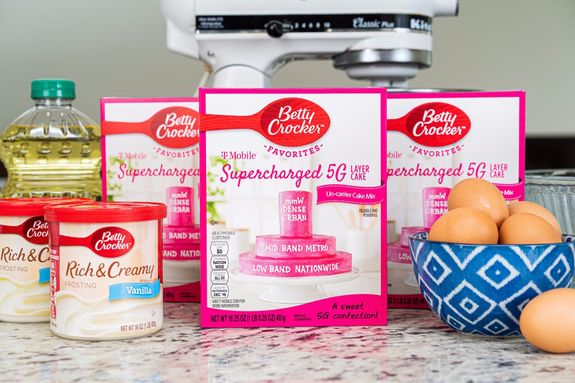Introduction
Rolling out a new layer of a mobile network has always required networks to think about how and when users should move between layers of the network. In the early days of 4G, a legitimate case could be made that strong UMTS2100 (often dual-carrier) was better than overwhelming a 10 MHz LTE800 carrier with inefficient users at the edge of a cell, both for the network and the user. As the network deployment matured, greater focus was on keeping users on 4G to prevent disruption, knowing that the UMTS network was unlikely to offer a much better service.
Deploying 5G Standalone (SA) is a bit different. Not only do many users often have access to 5G already through 5G Non-Standalone (NSA), they also often have access to the exact same spectrum being used for 5G SA FDD, because the deployment uses Dynamic Spectrum Sharing (DSS) between the LTE and 5G layers[1]. Achieving a balance between the marketing demands to have 5G everywhere, offloading users from pretty busy 4G networks and giving individual users the best possible experience (defined broadly as fast speeds – however debatable that as a goal may be) is no easy challenge.
5G SA on Vodafone
With that in mind, we can turn our eye to the only commercial 5G SA network in Britain, Vodafone UK. It's fair to say that it's not particularly widely used, requiring…
- a particular plan,
- you to have joined Vodafone since Feb 2023,
- a specific, compatible device,
- be "in an area covered by our 5G Ultra network", as well as
- a huge pinch of luck to meet whichever secret requirements also exist.
It's enabled only on a subset of Vodafone's 5G network, basically only sites running Ericsson equipment where Vodafone is the 'host' (the infamous network share causing issues once again). For those unfamiliar, Vodafone relies quite heavily outside of 'hot spot' areas on n1 DSS and n8 DSS (the latter almost never being used for 5G NSA), the n78 coverage isn't quite as developed as that on competitors (the 64T64R-only strategy at the beginning as well as a broader lack of scale does look to have impacted quite heavily here).
A very happy man, celebrating his ability to "unlock the true power of digital" with Vodafone 5G Ultra. Credit: Vodafone Press Office
The 'parameters' that control how a device moves between layers of a network (both between frequencies of the same technology and between technologies) could be a whole blog article in itself, so I'll try and keep my explanation and thoughts as brief as possible.
The thoughts have been based mostly on travels around Vodafone's South East and London (SEAL) area, but some differences where observed have been noted from Vodafone's South West and North (SWAN) network area.
It's clear that Vodafone is still 'testing and learning' with its SA deployment, a likely reason for it being fairly restricted in access. This article isn't a criticism of a hard job; it's very much just a few thoughts on it all.
The norm
Mobility parameters for selecting 5G SA from LTE are broadcast in the LTE System Information Block 24 (SIB24). If we look at the 'default' set up (signalling below), we can see a fairly simple strategy:
- The 50 MHz n78 carrier is prioritised above LTE (
cellReselectionPriority: 6), with a SS-RSRP threshold to move from LTE to NR of -96 dBm (if the phone measures the carrier to be higher than that in signal strength then it'll have a go at trying to connect to NR SA) - The other carriers (n1, n8, n78-C2) are prioritised below all LTE carriers, meaning that the average user is unlikely to use them
- While there are signal thresholds governing their use, they're not relevant in practice as you've exhausted all the LTE carriers by the time you start looking at these carriers, so it's exceedingly unlikely the thresholds will be met
carrierFreqListNR-r15
...
[1]
carrierFreq-r15 : 628032
multiBandInfoList-r15
[0] : 78
measTimingConfig-r15
periodicityAndOffset-r15 -> sf20-r15 : 0
ssb-Duration-r15 : sf1
subcarrierSpacingSSB-r15 : kHz30
cellReselectionPriority-r15 : 6
cellReselectionSubPriority-r15 : oDot6
threshX-High-r15 : 14
threshX-Low-r15 : 14
q-RxLevMin-r15 : -62
p-MaxNR-r15 : 23
deriveSSB-IndexFromCe11-r15 : false
[2]
carrierFreq-r15 : 428190
multiBandInfoList-r15
[0] : 1
measTimingConfig-r15
periodicityAndOffset-r15 -> sf20-r15 : 0
ssb-Duration-r15 : sf1
subcarrierSpacingSSB-r15 : kHz15
cellReselectionPriority-r15 : 2
cellReselectionSubPriority-r15 : oDot6
threshX-High-r15 : 31
threshX-Low-r15 : 31
q-RxLevMin-r15 : -62
p-MaxNR-r15 : 23
deriveSSB-IndexFromCell-r15 : falseThe exceptions
Other than this default, there can be quite a bit of variation. One variant of the SIB24 will let your phone give n78 SA a go at -106 dBm instead. Others are even more interesting. I'd like to highlight this one seen near Epsom railway station (Surrey) which contains only n1 as a candidate for idle mode mobility reselection.
Note that this time n1 is prioritised above LTE (cellReselectionPriority : 6, while LTE typically uses 3-5) and the thresholds are very
different. If your phone were to receive this, it would attempt to connect with n1 SA if it were stronger than -120 dBm.
carrierFreqListNR-r15
[0]
carrierFreq-r15 : 428190
multiBandInfoList-r15
[0] : 1
measTimingConfig-r15
periodicityAndOffset-r15 -> sf20-r15 : 1
ssb-Duration-r15 : sf1
subcarrierSpacingSSB-r15 : kHz15
cellReselectionPriority-r15 : 6
threshX-High-r15 : 2
threshX-Low-r15 : 0
q-RxLevMin-r15 : -62
p-MaxNR-r15 : 33
deriveSSB-IndexFromCell-r15 : false
t-ReselectionNR-r15 : 1The reality
A more realistic 'fully live' configuration has been spotted in a few places. The SIB24 I've personally seen in Crewe reflects what you'd expect a mature SA to look like. Here n8, n1 and n78 are sequentially prioritised above the LTE carriers.
I find it helpful to visualise it as the spectrum 'layer cake' T-Mobile USA famously used to promote their network strategy. The thresholds are different for each carrier: your phone will try and use n8 if it's stronger than -120 dBm; n1 if it's stronger than -116 dBm; and n78 if stronger than -108 dBm.
This feels instinctively quite aggressive at getting users onto 5G SA, particularly for n8. There are other groups of parameters that can be found, but I've tried to focus on the most common and the most interesting rather than creating a comprehensive (and boring) list — it's fair to say this is still early days on finding the right combination!
A delicious-looking box of T-Mobile Betty Crocker cake mix. Mmmm… Credit: T-Mobile USA Newsroom
carrierFreqListNR-r15
[0]
carrierFreq-r15 : 428190
multiBandInfoList-r15
[0] : 1
measTimingConfig-r15
periodicityAndOffset-r15 -> sf20-r15 : 0
ssb-Duration-r15 : sf1
subcarrierSpacingSSB-r15 : kHz15
cellReselectionPriority-r15 : 6
threshX-High-r15 : 4
threshX-Low-r15 : 0
q-RxLevMin-r15 : -62
p-MaxNR-r15 : 33
deriveSSB-IndexFromCe11-r15 : false
[1]
carrierFreq-r15 : 628032
multiBandInfoList-r15
[0] : 78
measTimingConfig-r15
periodicityAndOffset-r15 -> sf20-r15 : 0
ssb-Duration-r15 : sf1
subcarrierSpacingSSB-r15 : kHz30
cellReselectionPriority-r15 : 7
threshX-High-r15 : 8
threshX-Low-r15 : 0
q-RxLevMin-r15 : -62
p-MaxNR-r15 : 33
deriveSSB-IndexFromCe11-r15 : false
[2]
carrierFreq-r15 : 188450
multiBandInfoList-r15
[0] : 8
measTimingConfig-r15
periodicityAndOffset-r15 -> sf20-r15 : 1
ssb-Duration-r15 : sf1
subcarrierSpacingSSB-r15 : kHz15
cellReselectionPriority-r15 : 5
threshX-High-r15 : 2
threshX-Low-r15 : 0
q-RxLevMin-r15 : -62
p-MaxNR-r15 : 33
deriveSSB-IndexFromCell-r15 : false
t-ReselectionNR-r15 : 1The future
Although there's no one-size-fits-all strategy for deciding the right way to go around this, I think it's reasonably likely that Vodafone will eventually coalesce around a default set of parameters similar to those found at Crewe, but there are good reasons why they may not want to do that today. The most important factor — user experience — would probably be against using the Crewe parameter set network-wide today.
The SA layer cake is missing key tools that Vodafone uses to improve its network experience. There's no B20, no B32, no B7 and no B3 or B38. These frequencies are often used to top up the speed, and moving a user to 5G SA means the speed could be lower on n8 DSS compared to the LTE experience with heaps of carrier aggregation. n1 DSS could be added via CA, but this is a reasonably high load layer on the LTE side of things, and only 15 MHz. It's also not a given that n1 is present on a site with n8 and vice-versa.
This is the likely driving factor behind the default parameter set: get users off LTE onto n78 SA when it's strong enough to provide a high speed without a huge amount of ping-pong between the two networks. I think there are some valid questions about whether -96 dBm and -106 dBm are conservative values, but it also makes sense to take it slowly given LTE already provides a decent experience for most. I suspect we'll never see n78 getting to quite the same low values (-120 dBm) as we've seen n8 and n1, given its higher frequency and quite weak link budget for upload, but we'll probably see some movement in that direction.
As the network matures, more frequencies get brought over to the NR side (either as NR only or DSS) and more sites get the full set of n8,n1,n78, we'll probably see a greater shift to a more aggressive offload to SA. I'd hope we'd see the use of features vendors are developing to be smart in connected mode about whether NSA or SA represents the best choice for a user and hopefully the use of my favourite (quality based reselection - less important in a network with relatively low load). We may also see networks prioritise NR in scheduling over LTE when using DSS, giving more of a reason to get users to SA. In the meantime, accept that Vodafone taking it slow is probably the best choice for your speed tests, at least until 5G moves beyond being an 'eMBB'[2] solution.
Notes
[1] Dynamic spectrum sharing (DSS) allows one carrier to be used for multiple radio access technologies (RATs) at the same time. In this case, it can be used for LTE and NR simultaneously.
[2] "enhanced mobile broadband"

